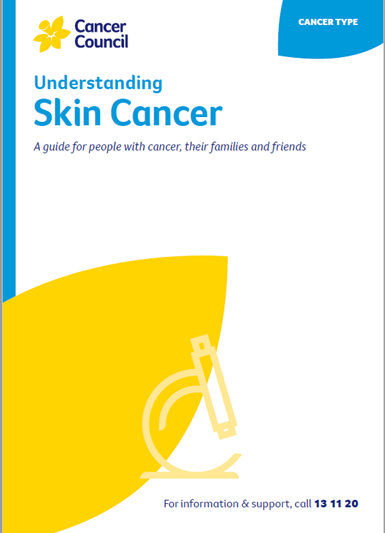- Home
- Skin cancer
- Life after treatment
- How to protect your skin from the sun
How to protect your skin from the sun
Most skin cancers are caused by exposure to the sun’s UV radiation. When UV levels are 3 or above, use all or as many of the following ways to protect your skin as possible. After a diagnosis of skin cancer, it is especially important to check your skin regularly and follow SunSmart behaviour.
Slip on clothingWear clothing that covers your shoulders, neck, arms, legs and body. Choose closely woven fabric or fabric with a high ultraviolet protection factor (UPF) rating, and darker fabrics where possible. | |
Slop on sunscreenUse an SPF 50 or higher broad-spectrum, water-resistant sunscreen. These are higher protection and also TGA approved. Apply 20 minutes before going outdoors and reapply every 2 hours, or after swimming, sweating or any activity where it will rub off. For an adult, use 1 teaspoon for each arm, each leg, front of body, back of body, and the face, neck and ears – 7 teaspoons of sunscreen in total for all of your body. | |
Slap on a hatWear a hat that shades your face, neck and ears, such as a legionnaire, broad- brimmed or bucket hat. Check that the hat meets the Australian Standard. Choose fabric with a close weave that doesn’t let light through. Baseball caps and sun visors don’t offer full protection. | |
Slide on sunglassesProtect your eyes with sunglasses that meet the Australian Standard. Wraparound styles are best. Sunglasses should be worn all year round to protect both the eyes and the delicate skin around the eyes. | |
Seek shadeUse shade from trees, umbrellas, buildings or any type of canopy. UV radiation is reflective and bounces off surfaces, such as concrete, water, sand and snow, so shade should never be the only form of sun protection you use. If you can see the sky through the shade, even if the direct sun is blocked, the shade will not completely protect you from UV radiation. | |
Don’t use solariumsDo not use solariums. Also known as tanning beds or sun lamps, solariums give off artificial UV radiation and are banned for commercial use in Australia. | |
Check daily sun protection timesEach day, use the free SunSmart Global UV app to check the recommended sun protection times in your local area. For more information, visit sunsmart.com.au. You can also find sun protection times at the Bureau of Meteorology (or the BOM Weather app) or in the weather section of daily newspapers. |
→ READ MORE: Changes to your appearance
Podcast for people affected by cancer
Listen now
A/Prof Victoria Mar, Director, Victorian Melanoma Service, Alfred Hospital and Monash University, VIC; Tracey Bilson, Consumer; Raelene Buchan, Consumer; Alison Button-Sloan, Consumer; Dr Margaret Chua, Radiation Oncologist, and the Skin Radiation Oncology team, Peter MacCallum Cancer Centre, VIC; Prof Anne Cust, Deputy Director, The Daffodil Centre, The University of Sydney and Cancer Council NSW, Chair, National Skin Cancer Committee, Cancer Council, and faculty member, Melanoma Institute Australia; A/Prof Paul Fishburn, Skin Cancer Doctor, Norwest Skin Cancer Centre, NSW and Faculty of Medicine, University of Queensland; Danielle Goss, Melanoma Clinical Nurse Specialist, Amie St Clair Melanoma (part of Melanoma Institute Australia), Wagga Wagga, NSW; Louise Pellerade, 13 11 20 Consultant, Cancer Council WA: Dr Shireen Sidhu, Head of Dermatology, The Royal Adelaide Hospital, SA; Dr Amelia Smit, Research Fellow – Melanoma and Skin Cancer, The Daffodil Centre, The University of Sydney and Cancer Council NSW; Dr Tony Tonks, Plastic and Reconstructive Surgeon, Canberra Plastic Surgery, ACT.
View the Cancer Council NSW editorial policy.
View all publications or call 13 11 20 for free printed copies.
